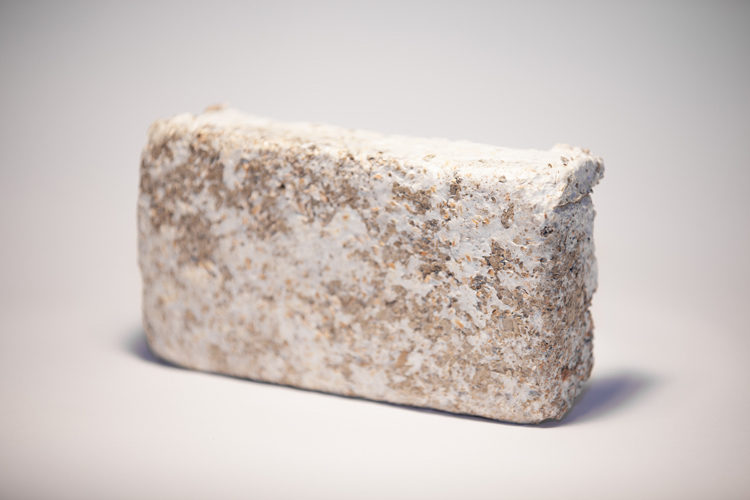However, researchers at a San Francisco Bay startup company have discovered a way to counteract this degradation. MycoWorks, a company which creates products out of fungi, believes that the answer may lie in replacing just some of the many products we consume with this entirely sustainable and renewable source material.
"They can take our greatest resource, which is human waste, and turn that into something that's really valuable to us. They have the ability to give us everything that we want" ~Philip Ross, Chief technology officer at MycoWorksThe company currently has the ability to create material which is similar to animal skin, but even sturdier than leather. They were able to create products which are more durable than deer skin in only a matter of months, but what is perhaps most encouraging about the project is that the material only takes two weeks to create, whereas real leather takes about two years for animal to be ready, without considering the costs of feed and housing.
On the contrary, mushroom-based products are entirely cruelty-free and can be created from any number of waste materials such as hemp hurds, paper waste, saw dust, and corn cobs. By feeding mushrooms particular things that they like, as well as managing temperature and light exposure, these scientists are able to create various breathable materials which theoretically could replace cloth, leather, and even wood and brick.
"My hope is that this will become a globalized industry that well beyond my lifetime...this will just become a standard way that human beings are going to figure out how to provide for themselves." ~Philip RossNot only is the material extremely durable and strong, but it is a highly competent flame retardant as well. Even when subjected to extremely hot flames, the fungus material stays intact and is immediately self-extinguishing. The combination of high-quality material and ease of production could make it an extremely desirable product for all types of consumers.
Being more resilient than brick and less flammable than wood, this material would naturally work well for building. Eventually, Philip and other scientists believe that it will be possible to produce smartphones, solar panels, and a whole plethora of other products from waste material and mushrooms.
"Everything that we call agricultural waste is actually an incredible resource that mushrooms can grow on. We're past peak oil, so if we are going to replace our current materials with something, it's still going to have to hold up in some type of sustainable way." ~Philip RossThis new material could go hand in hand with other environmentally friendly materials like hemp. If hemp and mushrooms were used together to create fuel, cloth, building materials, leather, and plastics, there would almost no longer be a need for concern over environmental damage or a lack of sustainability.
If you're interested in growing your own material from mushrooms, you can do so by following their guide in a short YouTube video. Theoretically, you could start building your own products from mushrooms right away. It's even possible to embed intricate colors and patterns directly into the material if you know how.
MycoWorks, after having debuted in 2016 with their plan to create enough mushroom material to sustain the growing industry, is still in operation today and continues to reach thousands of people with their message. With enough demand for locally-produced and sustainable materials, the future of consumer goods could turn from an environmental blight back into a sustainable way we can move forward into the future.
Phillip Schneider is a student and a staff writer for Waking Times.
This article (Company Develops Revolutionary Way to Create Leather, Wood, and Bricks from Mushrooms) was originally created and published by Waking Times and is published here under a Creative Commons license with attribution to Phillip Schneider and WakingTimes.com. It may be re-posted freely with proper attribution, author bio, and this copyright statement.




Comment: Partly due to monopolies on certain products, like cotton, wood and stone, and partly because society is so detached from it's past that we seem to have forgotten the uses of a wealth of things in the natural world. For example hemp can be used for clothing and as a construction material as hempcrete, stinging nettles can be used for fabric and as a powerful fertilizer.
It seems we're in the process of rediscovering the secrets of the natural world: